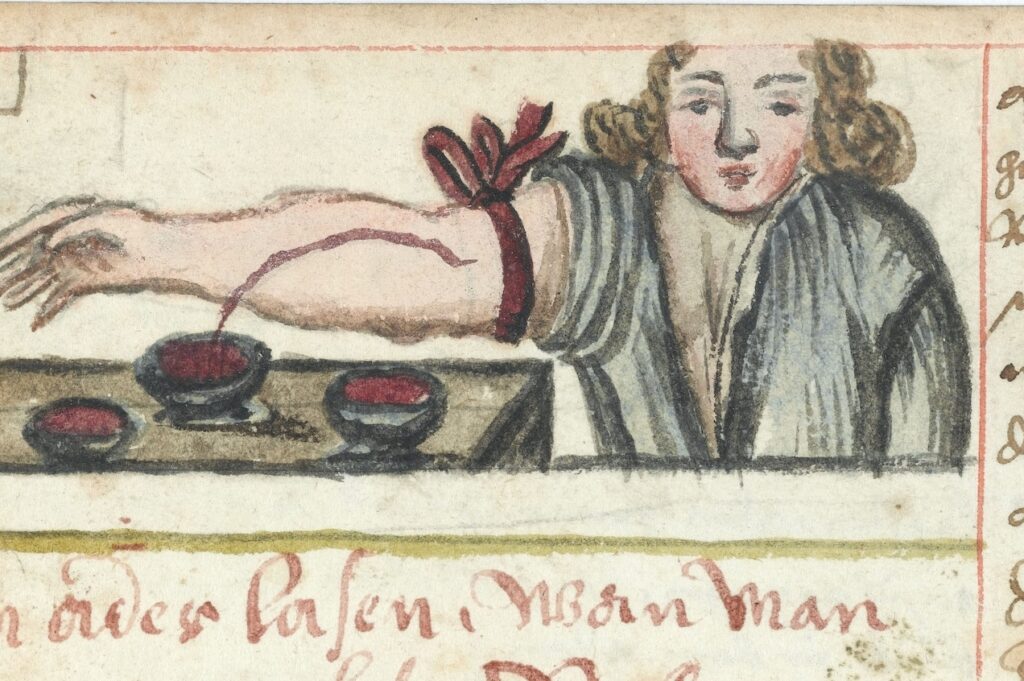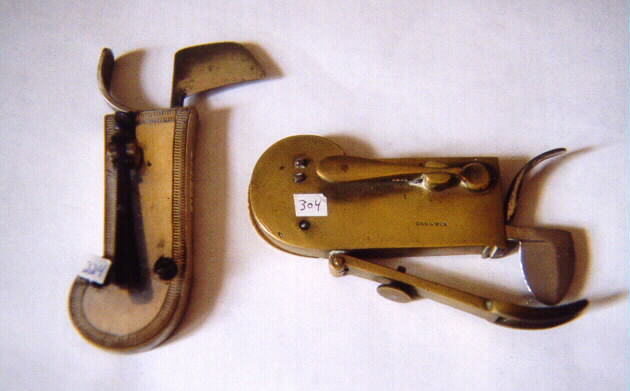Of Bloodletting and Leeches


Blood has held a fascination for humans, at once revered and feared. One of the earliest known medical treatments has been phlebotomy, or bloodletting, believed to originate in ancient Egypt and Greece, and lasting through second Industrial Revolution. Think about this: the germ theory is only 130 years old; transfusing blood is only 75 years old; but blood letting is 25000 years old! In ancient Greece, Hippocrates passed the technique on to Aristotle, who then passed it on to Alexander the Great, who then spread it throughout Asia. The second medical text ever printed on Gutenberg’s press? A bloodletting calendar in 1462. In the Middle Ages the Church had great authority and the Pope prohibited the clergy from blood letting, and physicians were afraid to do it. So it moved into hands of barbers, who then cut hair and veins. They used a tool called a lancet, and customers would even bring their own bowls. Some were decorated and some even became heirlooms! Leeches also used. “Leech” derives from the Anglo-Saxon word loece,”to heal” (medieval doctor called themselves leeches). Leeches were often used to bleed patients in hard to reach places–you can use your imagination on that one.
In 1883, French doctors alone imported 41.5 million leeches for bleeding!
The foremost American bleeder (not meaning person with hemophilia here) was Dr. Benjamin Rush, called the “Prince of Bleeders.” He was a scholar, humanist, social reformer, and signer of Declaration of Independence. He spoke out against slavery, capital punishment, and cruelty to children, and wrote the first American textbook on mentally ill. He served as a surgeon general to the Continental Army, was supervisor of US Mint, founded the Society for Protection of Free Negroes. Rush believed all disease arose from the excitation of blood vessels, which bleeding would resolve. He taught that body had about 25 pounds of blood, 20 of which could be safely drained. But the body actually holds less than half that! In 1793, an outbreak of Yellow Fever in Philadelphia killed patients at a rate of more than 100 a day. Many people fled in panic, but Rush stayed to care for the sick. He treated them by bleeding them, and bled more than 100 patients a day. While totally selfless, he actually did more harm than good. During this time, even George Washington was bled, and later died of blood loss.
Eventually phlebotomy was abandoned. A typhus epidemic in England in the 1830s, showed that even removing a little blood caused fainting, and the practice was eventually suspended. The rise of the germ theory also helped put an end to the questionable practice of bleeding.
Adapted from Blood, by Douglas Starr
Photos: Lancet used for bloodletting (http://www.medicalantiques.com/medical/Scarifications_and_Bleeder_Medical_Antiques.htm); an illustration of a bloodletting, circa 1675. WELLCOME LIBRARY, (https://www.nationalgeographic.com/science/article/bloodletting-is-still-happening-despite-centuries-of-harm)


